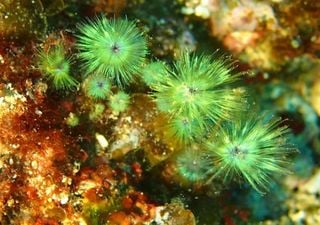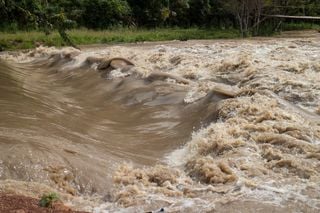Incredible shots of phytoplankton blooms from space! Fascinating pictures from spring 2024
This spring, algae blooms were observed in various places around the world. The swarms of phytoplankton turned the otherwise blue water green, light green or a milky turquoise blue.
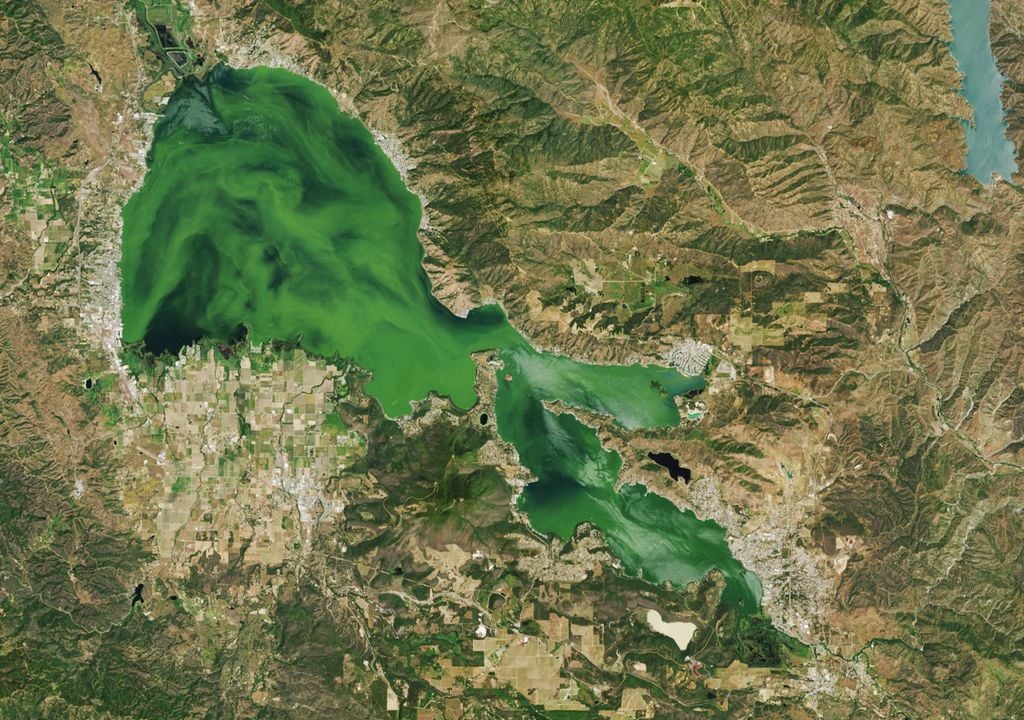
In May, phytoplankton blooms were observed in various places around the world. The recordings are images from earth observation satellites, for example from PACE or other orbiters.
For example, in mid-May 2024, an algae bloom clouded the water of California's Clear Lake. Clear Lake is a nutrient-rich, eutrophic lake located about 60 miles (100 kilometres) north of San Francisco Bay and has long supported large populations of algae, dating back to the end of the last ice age about 10,000 years ago, according to sediments.
Human influence causes harmful species to spread
The OLI-2 (Operational Land Imager-2) on the Landsat 9 satellite captured the bright green swirls over the lake on May 15th. The bloom could contain blue-green algae (cyanobacteria) as well as other phytoplankton species.
Due to the increasing discharge of substances by humans, harmful algae blooms have increased in recent years. Nutrients such as phosphorus enter the lake via tributaries and drive algae growth. Runoff from nearby farms, vineyards, faulty sewage treatment systems, gravel pits and an abandoned open-pit mercury mine contribute to the problem.
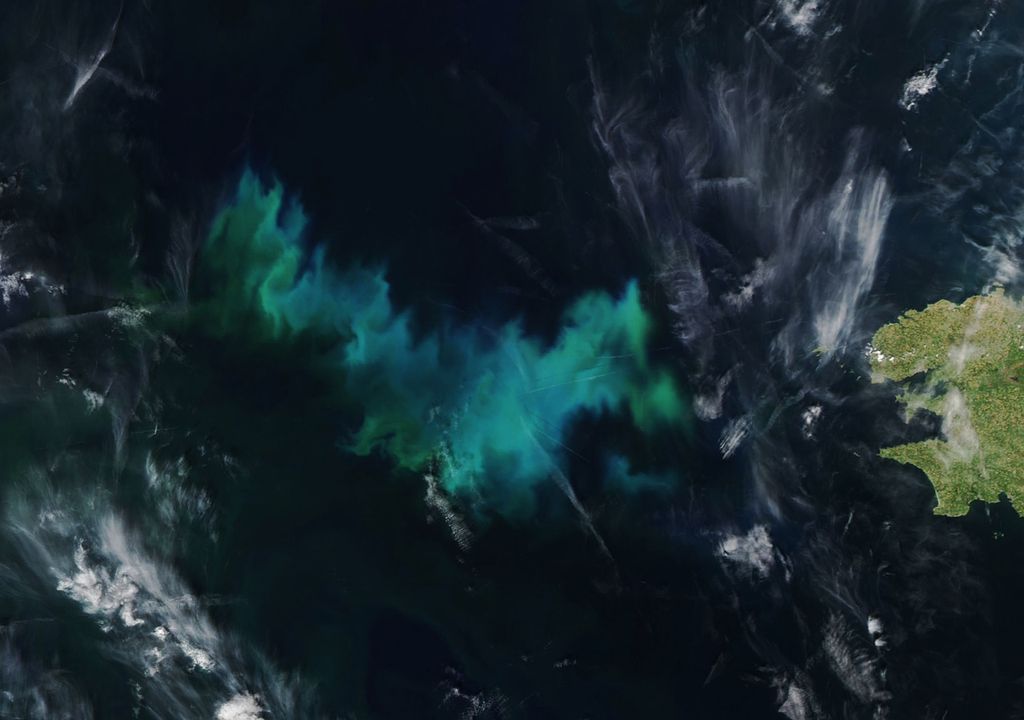
In the spring of 2024, bright green and blue shoals also crossed the waters of the Celtic Sea for hundreds of kilometres. With increasingly warmer surface waters in spring and more sunlight, phytoplankton blooms often occur in the northern seas. The MODIS (Moderate Resolution Imaging Spectroradiometer) on NASA's Aqua satellite captured this image in natural colours on May 10.
At the beginning of the season, diatom blooms dominate because the water is well mixed and there are enough nutrients. Diatoms with their silica shells and chlorophyll colour the surface water green. As the water warms and stratifies, conditions are more favourable for coccolithophores, another type of phytoplankton. Coccolithophores are armoured with highly reflective calcium carbonate and colour the surface water a milky turquoise blue.
The different colours in the flower could indicate a mixture of phytoplankton species. The colours could also come from coloured dissolved organic substances, which turn the seawater green, yellow-green or brown depending on the concentration.
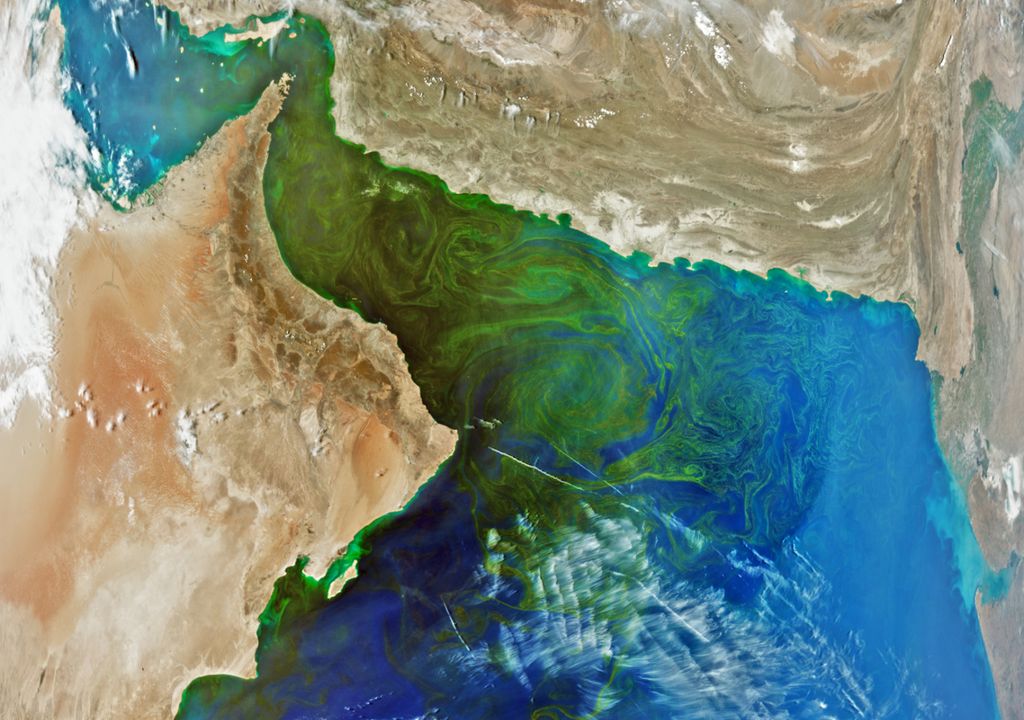
The image from Oman was taken on March 17, 2024 by the OCI (Ocean Color Instrument) of the NASA PACE (Plankton, Aerosol, Cloud, Ocean Ecosystem) satellite. It shows a scene with red (630 nanometers), green (532 nanometers) and blue (465 nanometers) wavelengths of light. This is not a natural colour image in the traditional sense, but is more detailed than what the eyes would see, but the features are very real.
The phytoplankton bloom was pulled into thin, swirling ribbons by turbulent eddies. The image "underscores the beauty and complexity of this area," said Jeremy Werdell, PACE project scientist at NASA's Goddard Space Flight Center.
The green swirls are likely Noctiluca scintillas, a type of marine dinoflagellates that have been found here in the past. Noctiluca blooms can have far-reaching consequences for marine life: bacteria use up oxygen as they break down dead phytoplankton, which can lead to hypoxia and dead zones.
Until now, determining the types of phytoplankton in a flower was only possible with direct water samples. But with the OCI, which can distinguish between hundreds of wavelengths of light, scientists could soon identify phytoplankton species from space.





